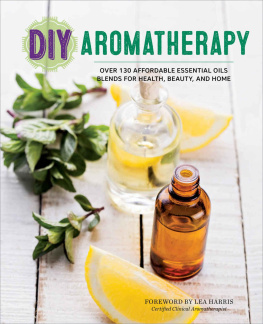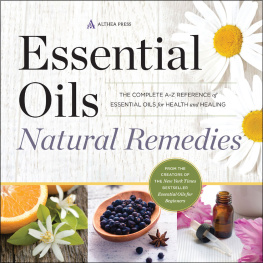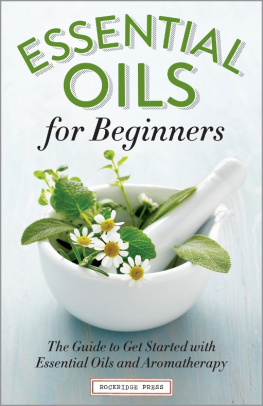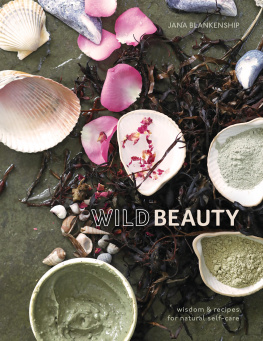


Power of the Seed 2014 by Susan M. Parker
All rights reserved.
This publication contains the opinions and ideas of its author. It is intended to provide helpful and informative material on the subjects addressed in the publication.
Power of the Seed is part of the Self-Reliance Series. For further information about these titles, see: www.processmediainc.com

Process Media
1240 W. Sims Way Suite 124
Port Townsend, WA 98368
Copyedited by Bess Lovejoy
Cover design by Gregory Flores
Interior design by Lissi Erwin / Splendid Corp.
Many, but not all botanical illustrations are from Herbarum Imagines Vivae, Frankfurt, Germany, 1535.
Technical and chemical diagrams by the author.
Typeset in Minister Std Book with Steagal, Goudy Bookletter 1911, Calvert Std and Rockwell Italic.
ISBN 978-1934-17055-7
10 9 8 7 6 5 4 3 2 1.
Contents

Books are seldom written or produced in a vacuum. People help, we pick up bits of information here and there, and knowledge accumulates. Then, when a book comes together, we want to thank all those who helped it come into being. This project has had a long period of incubation and several iterations over more than a dozen years. Some links and sources of information have faded into history. But others stand out as turning points in understanding.
Not being a chemist and only taking one class in college, understanding the structure and basic chemistry of the fatty acids and lipids in a meaningful way was a challenge. Information can be gleaned from books or websites but the basics, the fundamentals, are often hard to grasp without knowledgeable help. Two friends who are also chemists by training stepped into this space of ignorance to bring the clarity that only the trained mind can. Bob Lindberg of Santa Rosa, California, helped me grasp the basics of soap-making when I was beginning this journey. He helped with the explanation of how oil is transformed with the action of lye to form soap. That meant understanding what the oils were composed of in the first place, their structure and chemistry. His introduction was invaluable.
Fast-forward a dozen years and my good friend Lyn Faas of Port Townsend, Washington, helped with the phrasing and language to clarify the basic chemistry of the subject. A fundamental misunderstanding about the nature of fatty acids was gently corrected so that the true nature of the molecules was presented accurately. Lyn was generous with her time and knowledge, helping to fix and adjust language and concepts so that the material is accurate.
Books too played a part, and Udo Erasmus Fats That Heal, Fats That Kill enabled me to take what I had learned from my work with Bob Lindberg and soap-making and fill in missing links and gaps in understanding. Erasmus book presents the chemistry of oils and lipids in great depth, including both the natural and manipulated forms. Along with books, a wide variety of websites provided information on all aspects of the subject. From small and obscure sites to those from universities, government agencies, and research institutions, each answered the questions that came up along the way. Suppliers of oils too, have researched their materials and make this information available on the web. Natural Sourcing LLC., in particular, has much information and a wide variety of oils to offer. The process of writing this book has been one of self-education. I am indebted to each of the very many sources available to me.
I also want to thank Gail Julian, fellow herbalist, long-time supporter of my work and muse, for reigniting the flame under the earlier version of this project.
As you may or may not know, the first attempts at publishing this material was self-instigated. In those days it was still cut and paste, which made for a fun, if challenging, art project. But real publishing of real books has been an eye opener. I am deeply indebted to Process Media for seeing the value in this work and bringing it into being.
Thank you Juliet Parfrey for your introduction to your brother Adam Parfrey and to Adam for Process Media and its vision; Jessica Parfrey, for your guidance and all the back-end work bringing the book into being, including distribution and keeping me on track. Thank you Bess Lovejoy, for your excellent comments, suggestions, and smoothly flowing editing style that made the text readable and clear. Lissi Erwin for the beautiful book design and ability to organize illustrations, charts, technical data into clear readable form that enhances the material. Monica Rochester for helping track down many of the illustrations and images. And all the others that I dont know but that will bring this project into form, including printers, and distributors that have a hand in getting this into the world.
I have acknowledged others for helping with technical information, but any inaccuracies that may remain in the text or descriptions are mine alone. The lack of formal background in chemistry has had its pros and cons. The way I present the chemical structure and workings of the fatty acids, I am told, is unorthodox. Yet my curiosity kept me at the task of making connections and linking relevant information to the subject. The sum total of my inquiry is contained here and my need for a reference manual is complete. I share it with others who have need of information on the many and important fatty acids, lipids, and oils of the botanical world.
Acknowledgements are never complete until the authors support crew, their family, are recognized for the untold help they provide. I thank my husband Jeryl for reading reams of early drafts and acting as sounding board for the ideas and concepts as they bubbled up; his help is far beyond what I can ever fully acknowledge. And my daughter Olivia, who has taken to the oils with a passion dear to her mother. My son Evan, his wife Sarah, and grandbaby Theo, have proven willing guinea pigs trying out oil combinations for skin and body. And last but not least, the many friends and customers from around the country and world who have bought my products and provided invaluable feedback over the 18 or more years that this has been in production.
And finally, to my late mother, who I can still hear saying, go look it up. She didnt believe that one needed to memorize information, just know where to find it. She also loved to read. When my form of dyslexia, a new concept then, revealed itself as I stumbled over the Dick, Jane, and Spot early readers, she took it upon herself to learn the new discipline of phonics. She spent hours and taught me how to break down and sound out words, to recognize them, and appreciate their ability to communicate. And so this book is dedicated to her and her exhortation look it up, and the early intervention that helped me overcome my difficulty with reading. She opened up the world of the written word and made it accessible.
SMP
A Note on the Drawings
The fatty acid drawings represent the shapes and bonds between atoms in the fatty acid molecules, a visual representation of their basic structure. As molecules in nature, they are neither static nor absolute, while our drawings must be. The way the structures of the fatty acids change when nature, oxygenation, hydrogenation, and man act them upon is complex and dynamic, and difficult to represent in two-dimensional drawings, but we have done our best.
Next page











